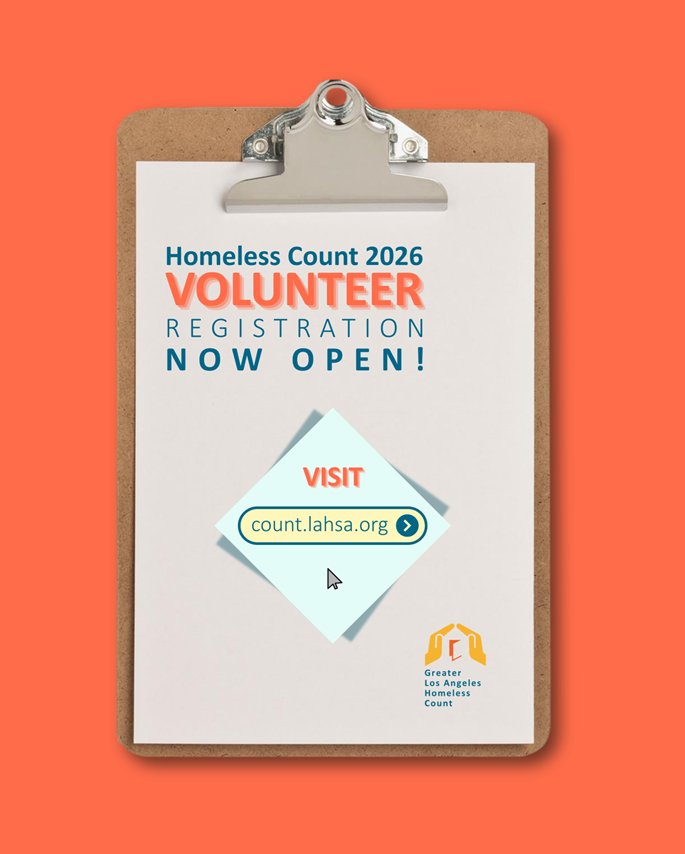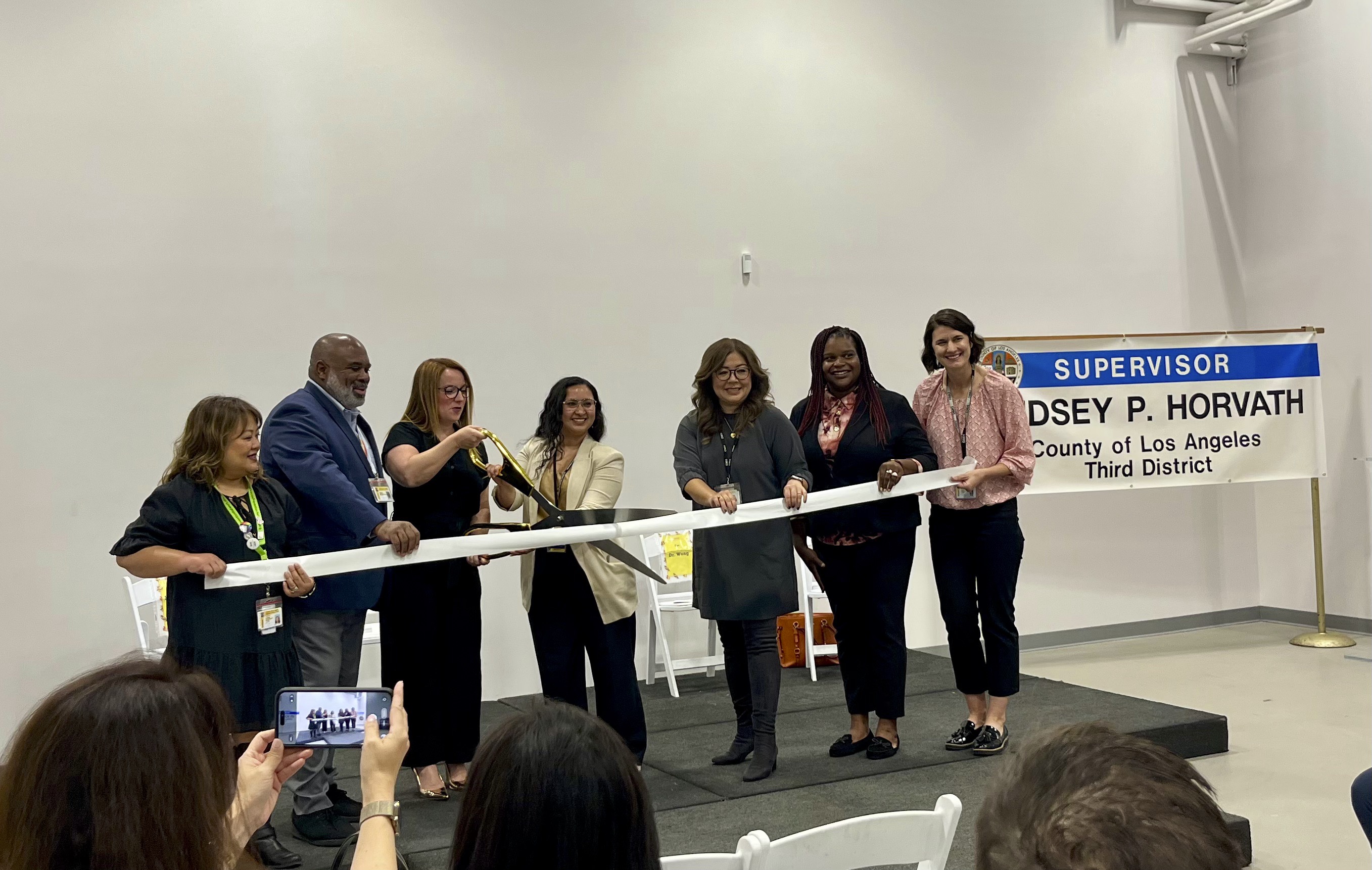RAND Webinar Recap: LA LEADS Study Reveals Homelessness is Down, But Needs are Up
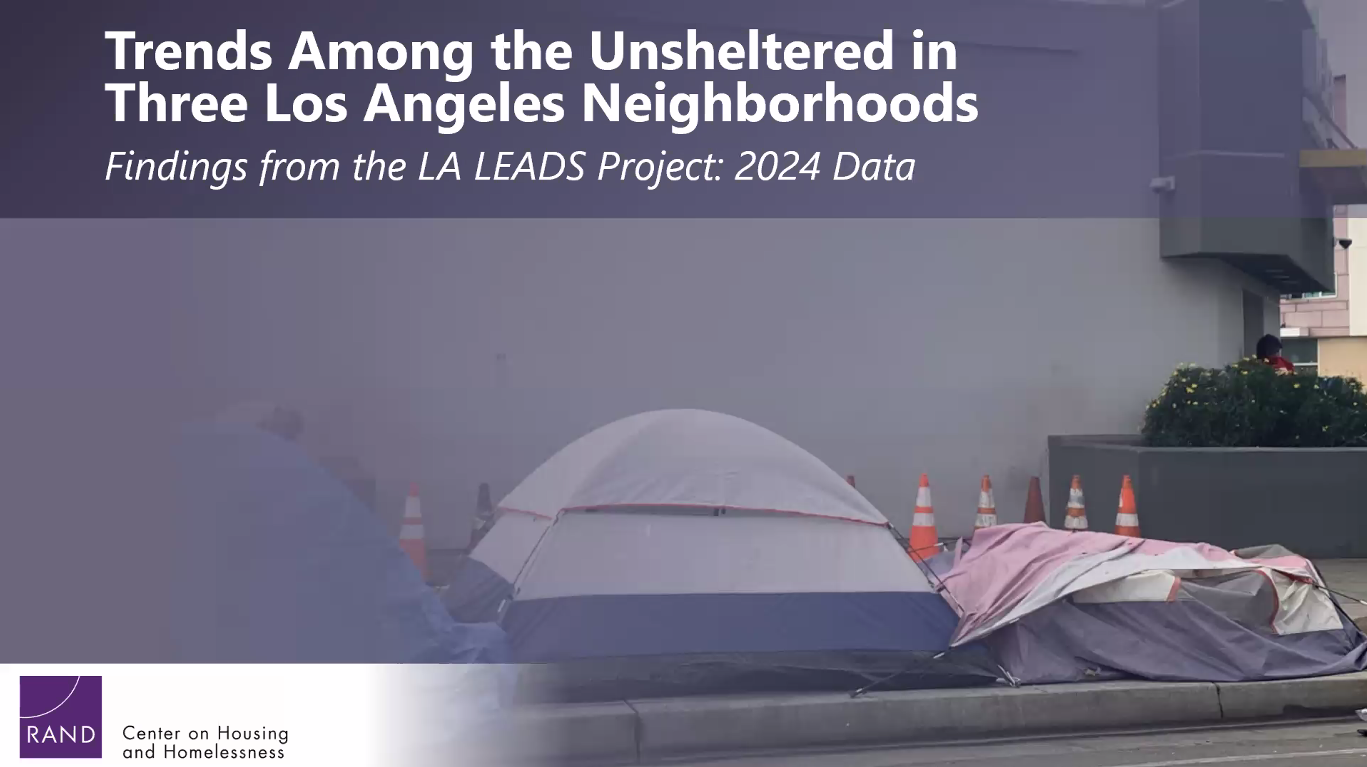
Webinar Recap: A Discussion on Recent Trends Among the Unsheltered in Los Angeles
Presented by RAND Corporation
📅 July 30, 2025 | 12-1pm
On July 30, RAND Corporation hosted an engaging and informative webinar with the co-authors of their recently released Los Angeles Longitudinal Enumeration and Demographic Survey (LA LEADS) study. Moderated by Hollywood 4WRD’s Executive Director Brittney Weissman, the timely conversation featured Louis Abramson (Adjunct Physical Scientist and Founding Member of Hollywood 4WRD), Rick Garvey (Senior Survey Coordinator), Jason Ward (Codirector, RAND Center on Housing and Homelessness), and Sarah Hunter (Director, RAND Center on Housing and Homelessness) breaking down what’s changing—and what still needs to change—on LA’s streets.
What’s New in 2024?
The study recorded its first-ever decline in unsheltered homelessness across Hollywood, Venice, and Skid Row:
- Hollywood: ⬇ 49%
- Venice: ⬇ 22%
- Skid Row: ➡ No overall change
Even with these positive trends, the panelists all pointed out this progress is uneven.
“We must celebrate the wins, but also recognize: 75,000 people are still unhoused in LA County.”
— Sarah Hunter, RAND
The decline was largely driven by reductions in tents and RVs. Meanwhile, rough sleeping rose, signaling a shift that requires a different approach to outreach and services.
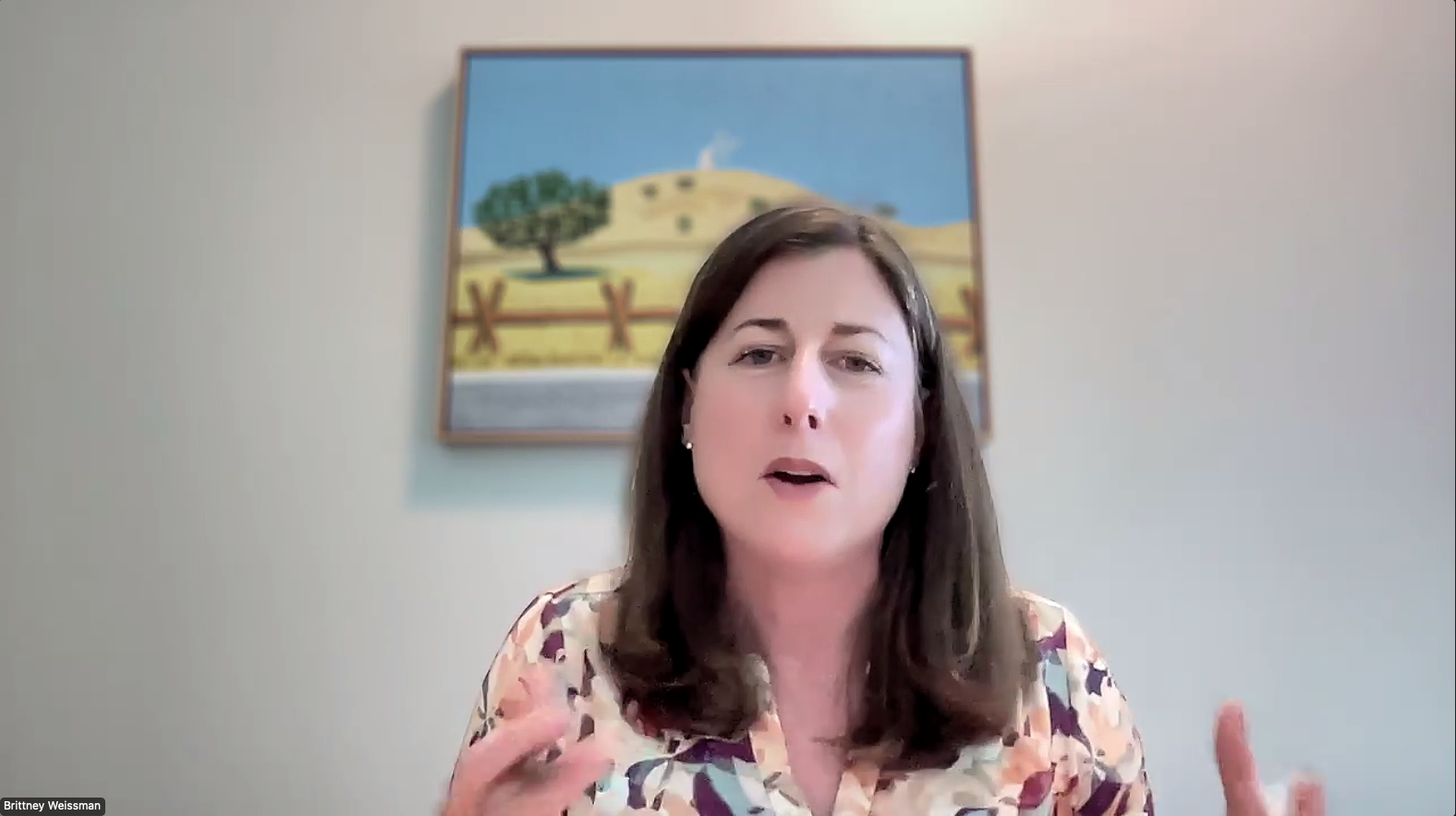
Key Takeaways
- Permanent housing matters: Successes in Hollywood closely tracked with Inside Safe activity and new HHH units opening up.
- Rough sleepers have higher needs: Outreach must now reach people who are more isolated, mobile, and medically vulnerable.
- Data accuracy still matters: In 2024, the official Point-in-Time count undercounted by about one-third in these neighborhoods.
“Outreach must evolve to reach people who no longer have tents or vehicles. Rough sleepers are more vulnerable, more isolated, and harder to engage.”
— Louis Abramson, RAND
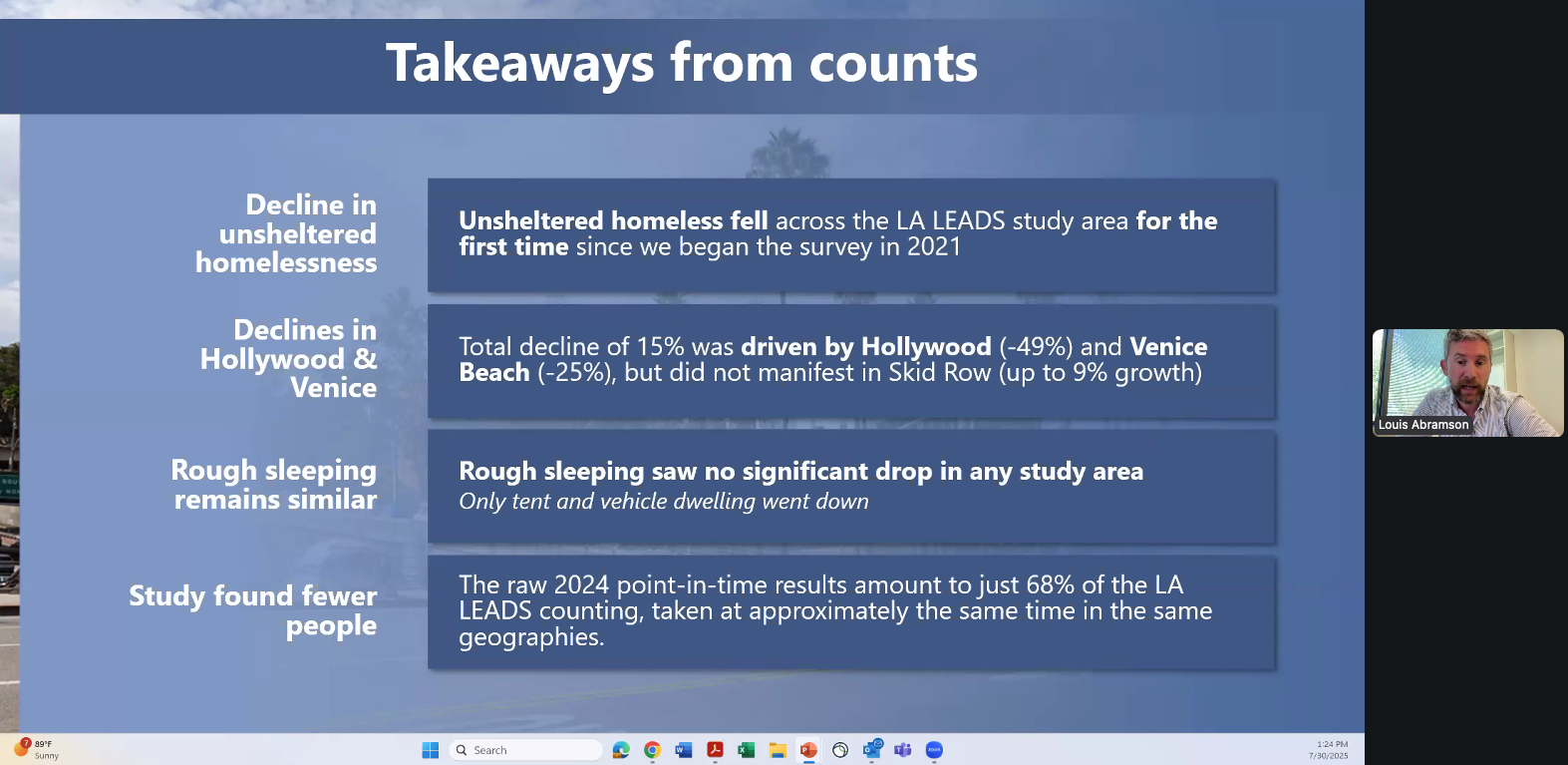
Q&A Highlights
- Why are people declining housing?
This is a top question for future surveys. Relationship-building and trust are especially important with rough sleepers who don’t have the social bonds of encampment life. - Where are people going?
While some are placed in housing, others move to adjacent areas, are jailed, or tragically die on the streets. Sadly, as Rick Garvey pointed out, roughly 6–7 people die per day while unhoused in LA County. - Can we trust the Point-in-Time (PIT) Count?
RAND’s counts aligned with PIT in past years, but in 2024, PIT underestimated homelessness by about 33% in the RAND study areas. - How will we adapt to fewer federal housing dollars?
Local funding (e.g., Measure H and new November 2024 tax measures) will be vital to sustain housing efforts.
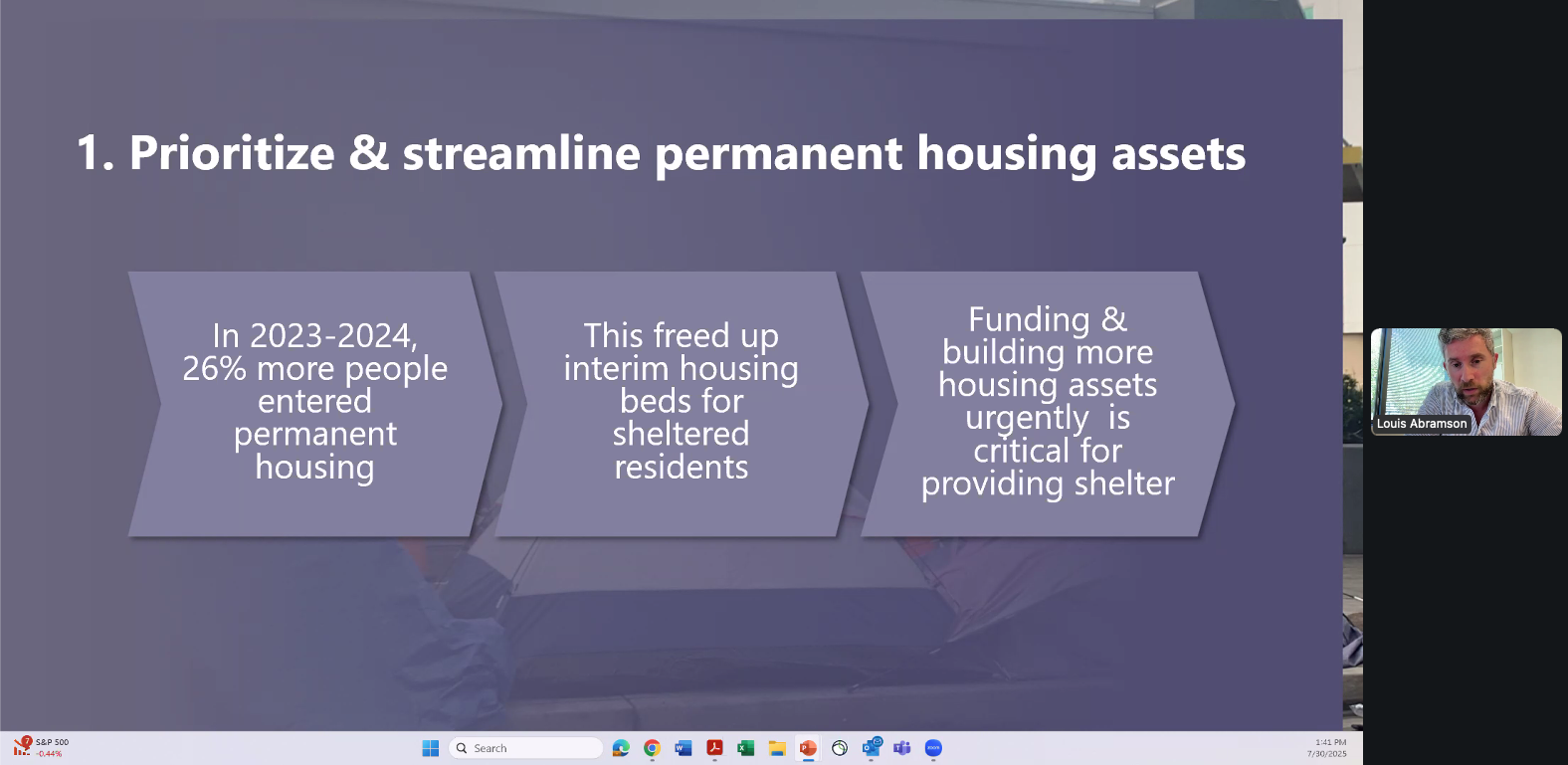
Action Items
- Adapt Outreach to Reach Unsheltered Populations:
Outreach models must evolve to better serve a highly mobile, street-dwelling population. The report emphasizes the need for multidisciplinary, trauma-informed outreach teams who can build trust and follow individuals across geographies. - Expand and Accelerate Permanent Housing Resources:
Although Inside Safe has dramatically improved the rate of interim placements, permanent housing remains the bottleneck. RAND stresses that permanent supportive housing is the only long-term solution and warns against an over-reliance on temporary options. - Advance Data Integration & Equity:
Data integration and service continuity remain major barriers, especially for individuals with complex health needs. The report cites breakdowns in case continuity, inconsistent use of HMIS, and lack of centralized data sharing.
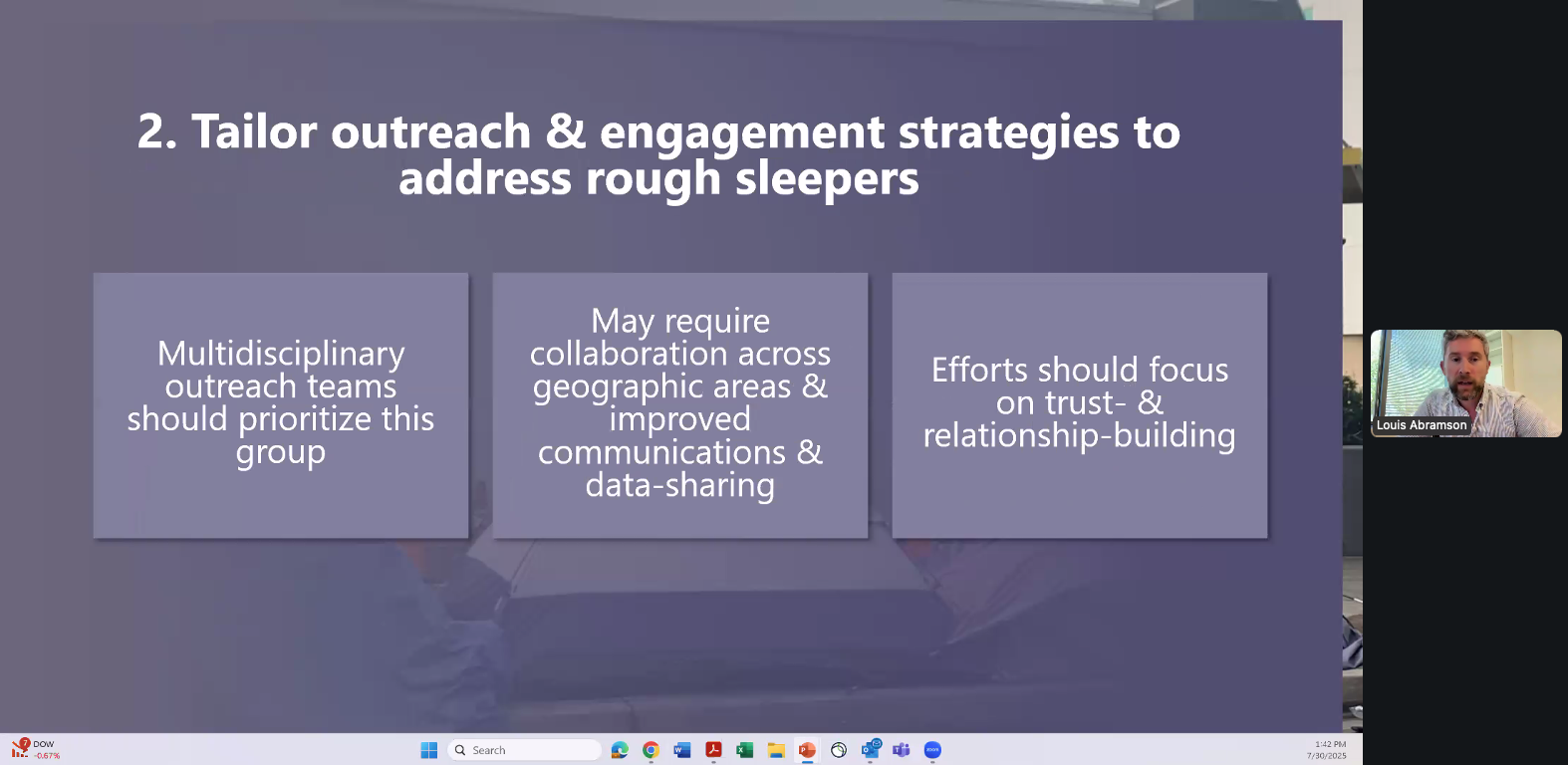
What’s Next
RAND is continuing its 2025 surveys with expanded Spanish-language outreach—especially important given the recent rise in monolingual Spanish-speaking families on Skid Row. But continued funding for 2026 is not guaranteed. We’ll make sure to keep the community updated on ways to support this important work. As Brittney reminded webinar listeners:
“This is not just data — it's a roadmap for action.”
— Brittney Weissman, H4WRD Executive Director
Click here to read the full LA LEADS report



.svg)
